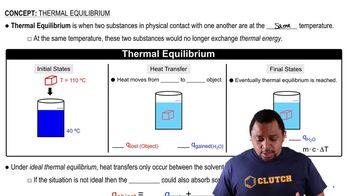Here are the essential concepts you must grasp in order to answer the question correctly.
Solubility Product Constant (Ksp)
The solubility product constant (Ksp) is an equilibrium constant that applies to the solubility of ionic compounds. It represents the maximum product of the molar concentrations of the ions in a saturated solution at a given temperature. For sodium urate, Ksp indicates the point at which the solution becomes saturated, and any additional solute will precipitate out of the solution.
Recommended video:
Solubility Product Constant
Precipitation Reaction
A precipitation reaction occurs when two soluble salts react in solution to form an insoluble product, or precipitate. In this context, when the concentration of urate ions exceeds a certain threshold, determined by the Ksp, sodium urate will begin to form solid crystals, indicating that the solution is supersaturated with respect to that compound.
Recommended video:
Equilibrium Concentrations
Equilibrium concentrations refer to the concentrations of reactants and products in a chemical reaction at equilibrium. In the case of sodium urate, the equilibrium expression derived from Ksp allows us to calculate the minimum concentration of urate ions needed to reach the saturation point, where the product of the concentrations of sodium and urate equals the Ksp value.
Recommended video:




